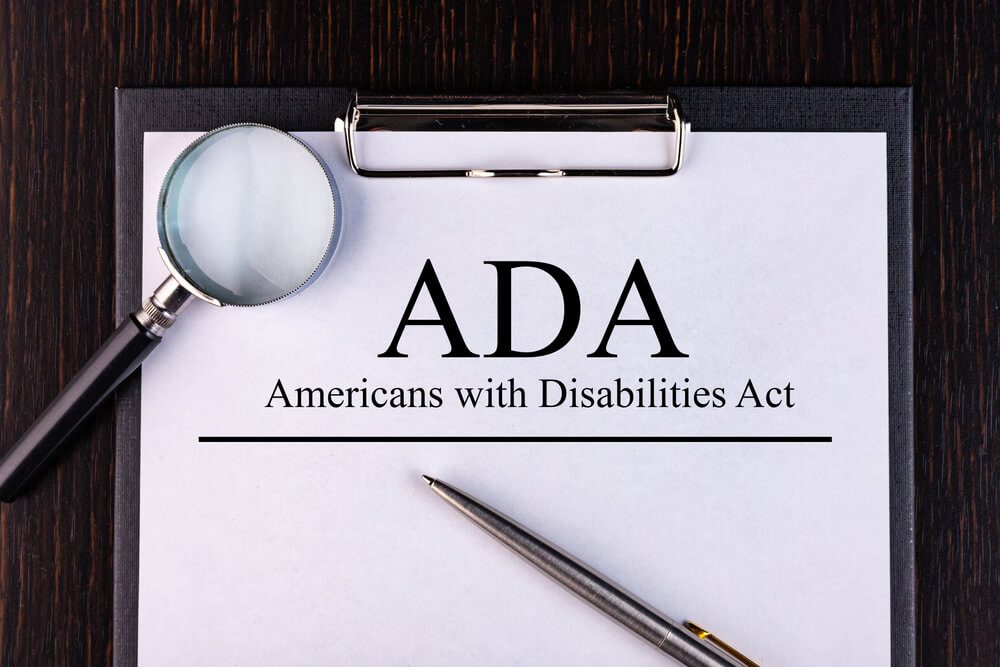
What Digital ADA Compliance Means for Business Websites Now
The web must be accessible to all, even people with disabilities. To aid people with disabilities in using the internet, the United States Department of Justice published the Americans with Disabilities Act (ADA) Standards for Accessible Design in 2010.
This guide focuses on ADA compliance and discusses the following:
- ADA compliance definition
- Why follow the Act
- How to check for compliance
- Strategies to ensure websites follow ADA regulations
Discover how the ADA influences your website and your customers.
To learn how Digital Authority Partners can create a standout website for you, watch this video!
What Does It Mean To Be ADA-Compliant?

Having an ADA-compliant website means adhering to the standards and regulations set by the ADA in the United States. The ADA protects people with disabilities from discrimination in employment, public accommodations, transportation, and telecommunications.
To follow ADA regulations, businesses and public organizations must ensure that their facilities, services, and communication channels (including websites, blogs, and other customer touchpoints) are accessible to individuals with disabilities. When it comes to business websites, here are some critical areas covered:
1. Website Accessibility
ADA compliance extends to digital spaces, including websites and online services. Business sites should allow people with disabilities to navigate and access their content. For instance, they should provide alternative text for images and video captions and ensure compatibility with assistive technologies such as screen readers.
2. Communication Accessibility
ADA compliance also requires effective communication with people with disabilities, including offering auxiliary aids and services such as sign language interpreters or captioning services for people with hearing impairments.
It's important to note that ADA compliance is not just a legal requirement. It also promotes inclusivity and equal access for individuals with disabilities. The specific requirements and guidelines for compliance vary depending on the context and type of organization.
Businesses must consult legal experts and accessibility professionals to guide them in following ADA requirements.
Who Should Follow ADA Requirements Online?
ADA legal requirements apply to many types of online organizations, including the following:
- All businesses operating in the United States, regardless of size or industry, including public-facing companies (such as restaurants, retail stores, hotels, and theaters) and those primarily serving employees or clients in an office setup.
- Public accommodations or places offering goods, services, or facilities to the general public including restaurants, hotels, theaters, shopping centers, schools, hospitals, recreational facilities, and more. These organizations must ensure that their online services are accessible.
- All levels of government, including federal, state, and local government agencies. Aside from government websites and digital services, their buildings, public services, programs, and activities should also be accessible. (A government digital agency can help with this.)
- Organizations that provide public transportation services, such as buses, trains, and ferries, must ensure accessibility for individuals with disabilities, including their information systems and websites.
- Schools, colleges, and universities must comply with ADA regulations to ensure that students with disabilities have equal access to education, facilities, services, and programs.
How To Check Your Website for ADA Compliance

Find out if a website complies with the ADA by evaluating its accessibility and identifying any barriers that prevent people with disabilities from accessing and using its content. Follow these techniques.
- Familiarize yourself with the Web Content Accessibility Guidelines (WCAG) developed by the World Wide Web Consortium (W3C). It is a set of internationally recognized standards for web accessibility. The current version is WCAG 2.1, with three levels of conformance: A, AA, and AAA.
- Conduct automated accessibility audits using online tools and software. Automated tools are a good starting point; however, these may not capture all accessibility barriers, so include manual testing as well.
- Perform manual testing using assistive technologies and user-based testing to identify accessibility barriers. Follow these techniques:
- Use screen reader software, such as NVDA (NonVisual Desktop Access) for Windows or VoiceOver for Mac, to navigate and understand website content without relying on visual cues.
- Ensure that the website can be fully navigated and interacted with using only the keyboard, without relying on a mouse or hand gestures.
- Check that text and graphical elements have sufficient color contrast to ensure readability. This can actually make the site easier for everyone to use, even those without any vision impairment.
- Verify that all images have alternative descriptive text (alt text) attributes, providing a textual description of the picture.
- Ensure that videos and audio content have synchronized captions or transcripts.
- Verify that form fields have appropriate labels and that error messages are associated with relevant fields.
- Test websites across browsers (e.g., Chrome, Firefox, Safari, Edge) and devices (desktop, mobile, tablet) to ensure consistent accessibility across other platforms.
- Ask a digital marketing agency to create an ADA-compliant checklist for your website like Digital Authority Partners did for ClearGov.
What Are Strategies To Ensure ADA Compliance?
To ensure websites follow ADA regulations, businesses and organizations must implement various best practices. Aside from regular ADA compliance checks, remember the following strategies:
- Design websites with accessibility in mind. Incorporate accessibility principles during the design phase of the website or application instead of tacking these features on later.
- Ensure proper color contrast, straightforward typography, and consistent navigation.
- Use semantic markup and appropriate headings to logically structure content.
- Ensure users with visual impairments can understand the content the images convey by providing alternative text (alt text).
- Create concise, accurate, and contextually relevant alt texts for images.
- Provide captions or transcripts for multimedia content, such as videos and audio files.
- Provide training to development, design, and content teams about web accessibility principles and techniques.
- Promote a culture of accessibility within the organization and encourage ongoing learning and improvement.
- Engage accessibility professionals or consultants who specialize in web accessibility to conduct audits, provide guidance, and ensure compliance with ADA regulations.
- Monitor and maintain accessibility because ADA compliance is an ongoing process. Continuously monitor and maintain accessibility every time you update your website or add new content.
- Remember to periodically retest and address any accessibility issues that arise.
- Consider engaging an ADA accessibility consultant or an experienced web accessibility professional to thoroughly audit the website.
By implementing these strategies, businesses and organizations can work towards creating an inclusive digital environment that meets ADA standards and provides equal access for individuals with disabilities.
Summing Up
ADA compliance ensures that everyone, regardless of physical and mental capacities, can freely and successfully access information on the web. Although these specific regulations have the force of law only in the United States, organizations worldwide can use these principles to make their websites more welcoming and useful to persons with disabilities.
Ensuring that your website follows ADA guidelines and tracks any updates can be challenging, and a misstep in this area can risk costly litigation. Fortunately, with the help of an ADA compliance expert such as Digital Authority Partners (DAP), you can guarantee the best results. Contact DAP today to learn more about your role in applying ADA regulations.
Want To Meet Our Expert Team?
Book a meeting directly here




